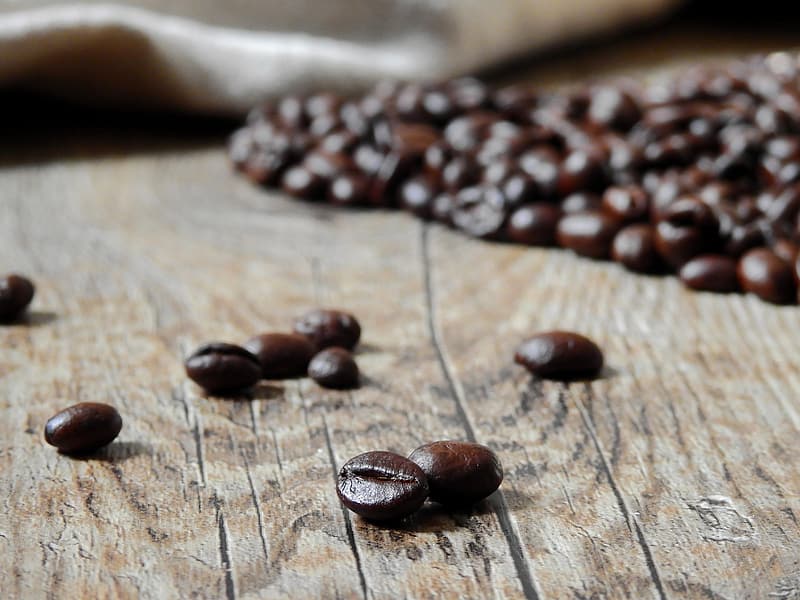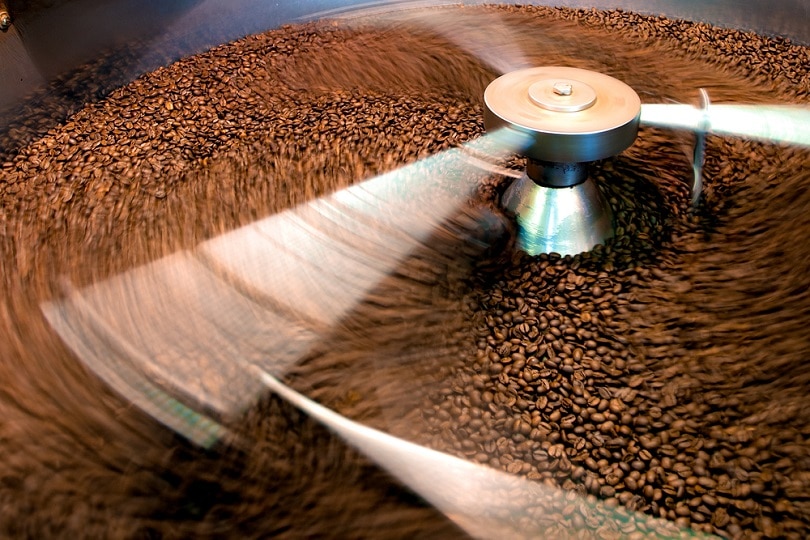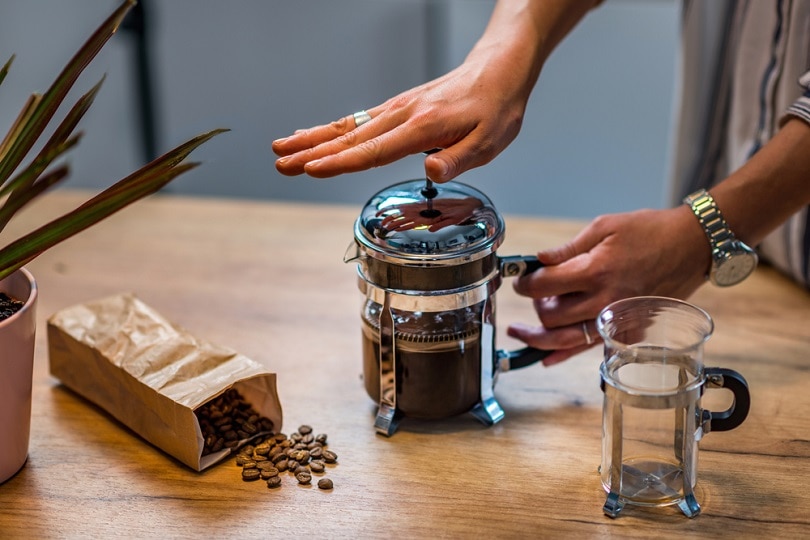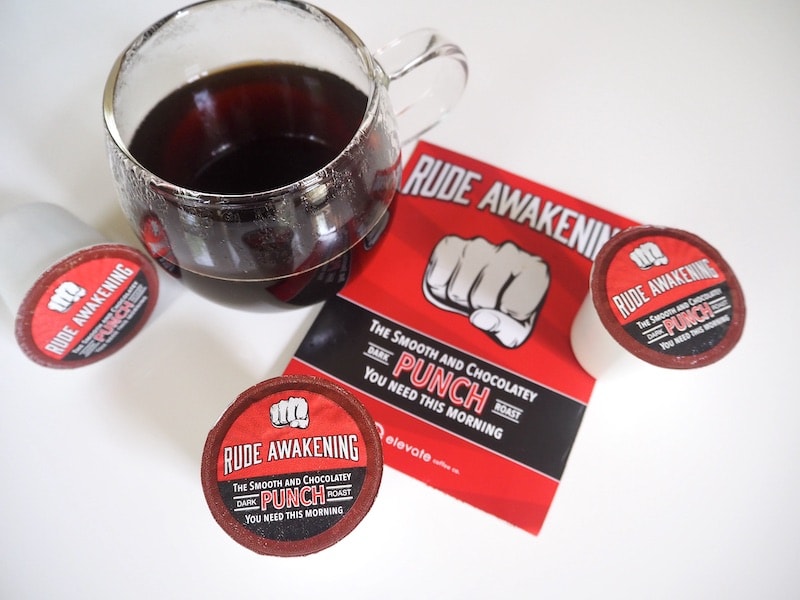
Have you ever poked your eye into a fresh bag of coffee beans and been greeted by a shiny, oily glare? If so, you might have wondered what makes some coffee beans appear wet and greasy while others look dry and like they have a matte finish. There is a simple reason — and it’s probably not what you think. To answer that question requires a deep dive into one of the most important aspects of the coffee industry: roasting.
In this article, we’ll explain why some coffee beans look oily, and others don’t. To help you gain a complete understanding, we’ll start with an overview of the coffee roasting process before getting to the driving factors behind oily coffee beans. As a bonus, we will even give you a few tips for brewing oily beans that will help you get even more out of them. So what does that layer of oil tell you, and is it something you should seek out or avoid? Let’s get started!

Why are coffee beans oily?
Contrary to a common myth, oil on your coffee beans doesn’t always indicate freshness. Oily beans are not just fresh beans, and non-oily beans aren’t necessarily stale. The oils you find on some coffee beans appear during the roasting process.

A Whirlwind Tour of Coffee Roasting
To fully appreciate what makes some coffee beans oily, we need to cover some roasting basics first. When coffee farms ship coffee beans to roasters, they’re shipping raw green coffee beans. Before you can smash them up, soak them in water, and enjoy your morning cup of coffee, a coffee roaster has to work its magic first.
Temperature
Coffee roasting is one part art, one part chemistry, and one part food science and requires the expert roaster to be well-versed in many different areas. Coffee roasting happens at very high temperatures — between 370°F and 540°F. How long the coffee beans stay at any given temperature dramatically affects the final product, and coffee roasters take great pains to ensure the coffee beans reach the right temperatures at the right times.

Time
A typical batch of medium roast coffee takes roughly between 14 minutes and 20 minutes, depending on the batch size and the desired roast level. The temperature and the roasting time work together to produce a coffee bean roasted all the way through without burning on the outside or leaving the middle raw and fibrous. As the outside of the coffee bean starts to roast, it undergoes a reaction called the Maillard reaction, giving it a sweet, caramelized taste.
The longer the roasting process lasts, the darker the resulting bean and the more oily the bean will look. Coffee beans contain natural oils that escape from the bean’s interior once the bean passes a certain roast level. As the coffee bean’s structure breaks down under prolonged heat, it becomes more permeable, and the oils seep out to the surface.

For that reason, light roast and medium roast coffee beans are less likely to look oily. They simply haven’t been roasted long enough to draw the oils out. In general, the darker the roast, the more oily a coffee bean will look, but lighter roasts can occasionally look oily too. As coffee beans age, regardless of their roast level, the natural oils will make their way to the surface. This process doesn’t happen quickly, so if you notice oil on a medium or light roast, it means the beans are getting old and likely to have lost some of their initial flavor.

What’s the problem with oily coffee beans?
The biggest potential problem with oily coffee beans involves your grinder. If you buy whole coffee beans — the only way to see oil on the bean surface — you have to grind them before brewing, and this is where things can get a little hairy.

The oil in coffee beans can clog your grinder, especially if you have a burr grinder or a coffee machine with a built-in grinder. No one wants a clogged, unusable coffee grinder in the morning!
Another problem is that oily beans are very, very darkly roasted. You may love the burnt, caramelized flavor of French roast coffee, but if you prefer more complexity, you won’t find it in oily beans.

Brewing Oily Beans
While it is entirely acceptable to brew oily coffee using any method, we find that the best results come from immersion-style brewers. The French press is an excellent choice for brewing oily dark roasts since there is no paper filter to remove the oils, resulting in a flavorful, full-bodied cup of coffee.
Use a Coarser Grind
If you have a very oily and exceptionally dark roast, consider grinding your coffee slightly coarser than you usually would, regardless of what method you use to brew. A coarser grind size can help extract the rich, chocolatey flavors people love about dark roasts and help you avoid strong, bitter notes.

Lower the Water Temperature
Another trick people use to get more out of oily dark roasts is to lower the water temperature. We tend to brew our coffee around 205°F, but we drop the temperature as low as 195°F for the darkest, oiliest beans. Taking that logic one step further, cold brew is an excellent choice for oily beans since the low temperatures won’t extract the harsher, bitter flavor compounds.
Stick with Cold Brew
If your beans are oily because they’re old, we recommend sticking with cold brew. Old beans tend to be less flavorful and more bitter but can be resurrected in cold brew. Besides being better at extracting pleasant malty flavors over undesirable bitter tasting notes, cold brew is also very forgiving, making it easy to brew decent batches with old coffee beans.

Oily Coffee Beans: The Bottom Line
The short answer is that oily coffee beans are dark roast beans roasted beyond the second crack. Despite common belief, oily coffee beans aren’t necessarily more fresh than non-oily beans — they’re just more intensely roasted. Oily beans can clog your grinder and generally indicate a very dark roast that is likely to have a burnt flavor. If your grinder can handle it and you like the taste, go ahead and buy French roast beans! If not, you may want to stick to light roast, medium roast, or medium-dark roast coffee beans.
Most oily coffee beans are dark roasts because the roasting process breaks down the coffee bean’s structure, allowing naturally present allows to seep to the surface. However, older coffee beans of any roast level could also have an oily finish since the oils will eventually make their way to the surface if given enough time. If you notice an oily finish on light or medium roast coffee beans, it’s probably because the beans are old and no longer fresh.
RELATED READS:
Featured image credit: Unsplash















